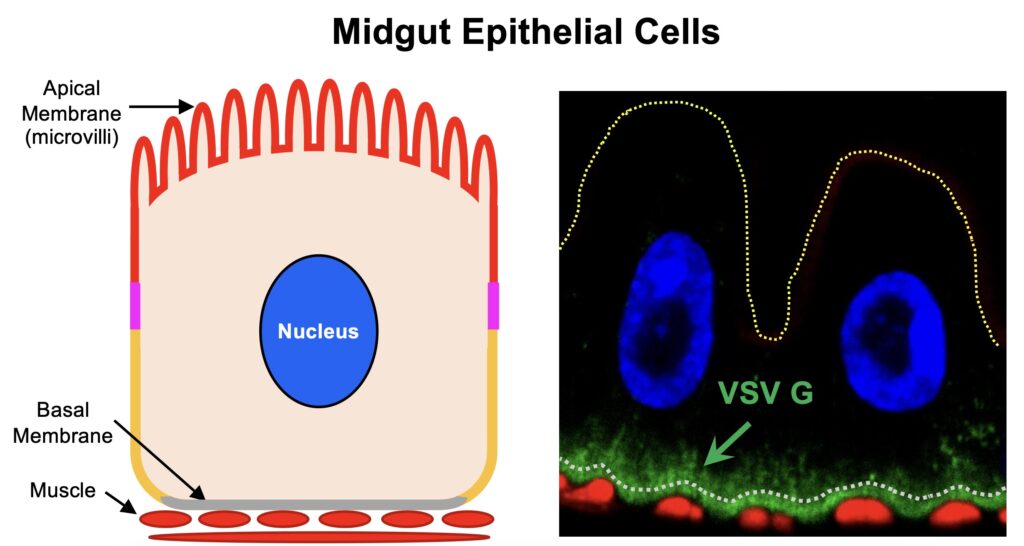 Viruses are master parasites that have adapted to infect many host species. Some viruses even use multiple hosts to spread their infections – such as arboviruses that use insects to move their infections to mammalian hosts like humans. Understanding how they move through insects could lead to new ways to block their transmission. In a study recently published in the Journal of Virology, researchers uncover the clever tactics viruses use to spread through their insect hosts and potentially infect other animals. This knowledge is particularly crucial for combating viruses that spread from insects to humans or livestock, like Zika, Dengue, and West Nile virus.
Viruses are master parasites that have adapted to infect many host species. Some viruses even use multiple hosts to spread their infections – such as arboviruses that use insects to move their infections to mammalian hosts like humans. Understanding how they move through insects could lead to new ways to block their transmission. In a study recently published in the Journal of Virology, researchers uncover the clever tactics viruses use to spread through their insect hosts and potentially infect other animals. This knowledge is particularly crucial for combating viruses that spread from insects to humans or livestock, like Zika, Dengue, and West Nile virus.
The researchers used fruit flies as a model to track the movement of proteins from two different viruses: one that only infects insects and one that can infect insects and other animals, including humans.
“Even when expressed on their own, without the rest of the virus, these proteins moved to precisely the correct locations in the insect cells,” explained Gary Blissard, a professor at the Boyce Thompson Institute and one of the lead authors of the study. “In the insect gut, both proteins traveled to the bottom of the cells, positioning themselves to exit into the insect’s body cavity. In the salivary glands, the insect-only virus protein still went to the cell bottom, but the other protein often moved to the top of the cells–perfectly placed to assemble new virus particles for exit into the saliva, and for infecting a new animal host.”
This positioning is crucial for the viruses’ survival and spread. It’s as if the proteins have built-in GPS, directing them (and, by extension, the viruses they’re part of) to precisely the right locations to continue their lifecycle. The study found that this GPS system actually consisted of amino acid sequence signals encoded in the viral proteins. These signals were recognized by the host’s own protein transport systems, and directed the proteins to the virus’ chosen location. The team also identified components of the cellular machinery that these viral proteins hijack to reach their destinations.
This knowledge could lead to new ways of disrupting the viral proteins’ “GPS” or the cellular machinery they exploit. Thus, these viruses could be prevented from reaching or leaving the salivary glands, effectively turning off the virus’ ability to use the insect as a vector.
“Our research highlights the incredible adaptations viruses have evolved to navigate through complex biological systems such as insects,” said Nicolas Buchon, associate professor at Cornell’s Department of Entomology and co-lead author of the study. “It’s a reminder of the continuous evolutionary arms race between viruses and their hosts and the importance of basic research in understanding these intricate biological processes.”
By revealing the molecular mechanisms behind viral movement in insects, this study opens new avenues for controlling insect-borne diseases and managing agricultural pests, potentially leading to better public health outcomes and crop protection strategies in the future.
This research was funded in part by the NSF, NIH, and USDA.
